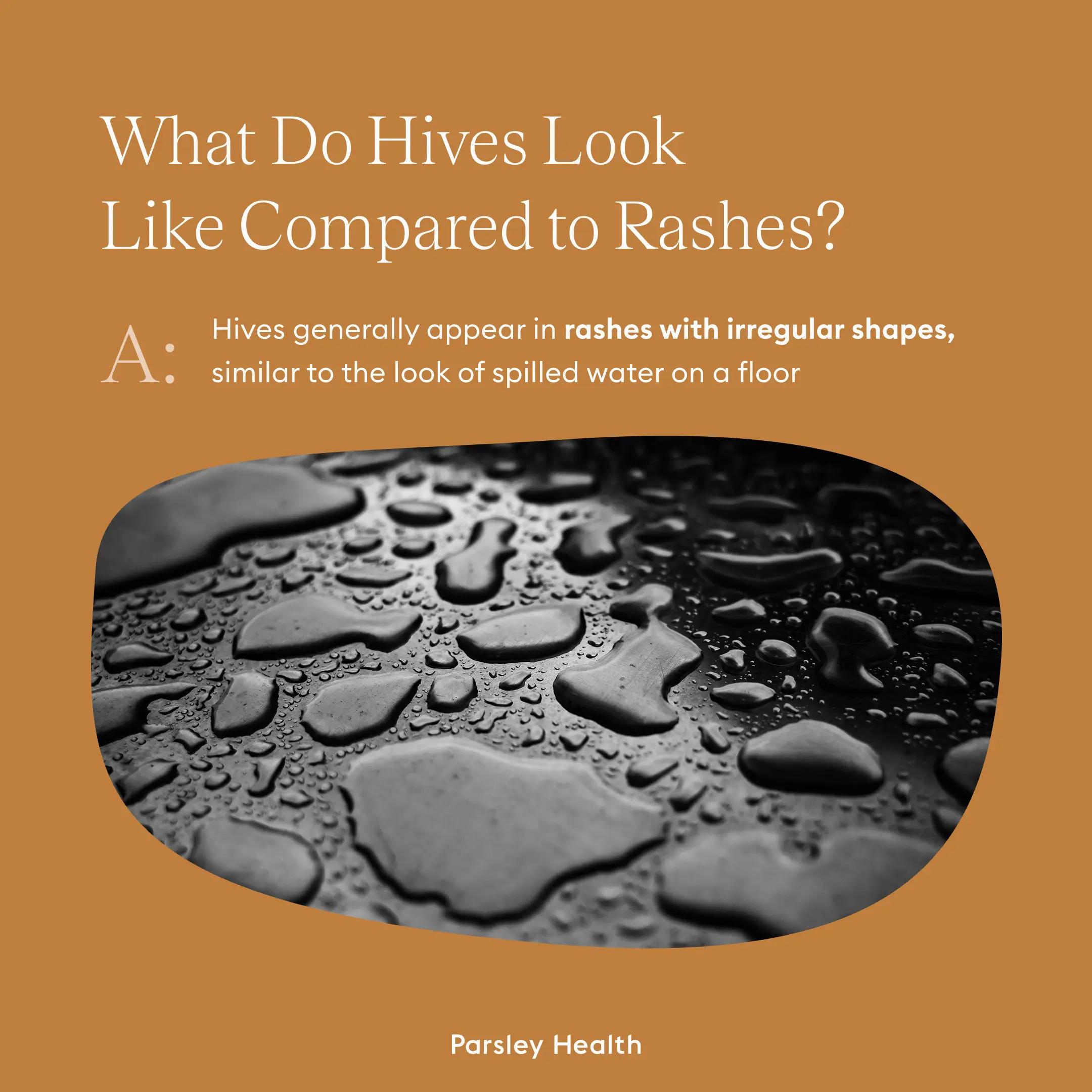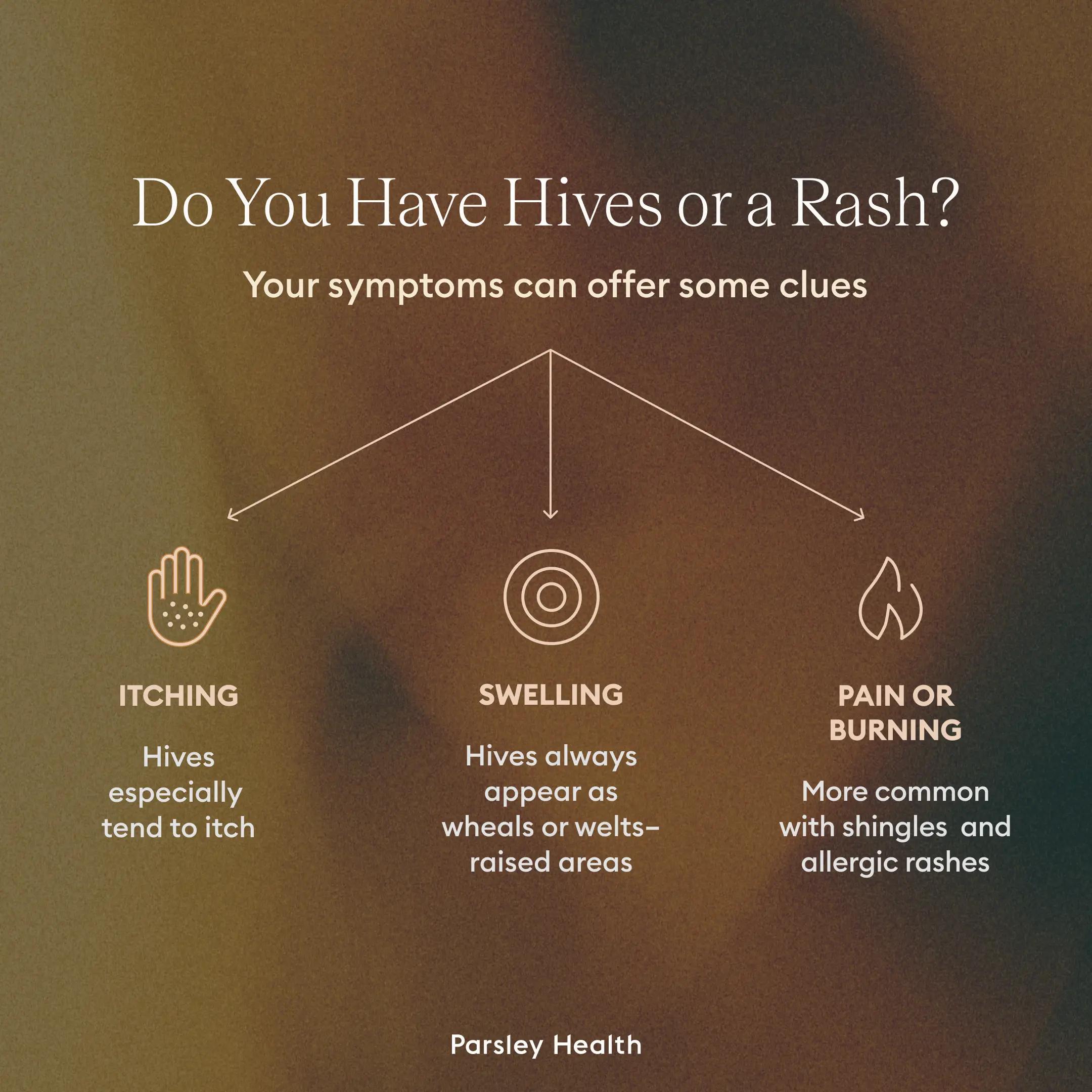The term “rash” refers to a change in color or texture or both with your skin. Hives are a distinct type of rash that features raised wheals (welts). All hives are rashes, but not all rashes are hives. Treatments for rashes vary based on the underlying cause.
I’m a highly allergic and skin-sensitive gal, so I’ve had a litany of hives and rashes in my time. With sometimes overlapping symptoms, hives and other types of rashes can easily be confused with one another. So what’s the difference?
“Hives (or urticaria) are a distinct type of rash characterized by raised, itchy welts that can appear suddenly, shift location, and usually fade within 24 hours,” says Srdjan Prodanovich, MD, FAAD, a board-certified dermatologist and founder of EZDERM.
“In contrast,” he adds, “‘rash’ is a broader term that refers to any skin change or eruption, including redness, scaling, or inflammation caused by various conditions such as eczema, contact dermatitis, or infections. In short, all hives are rashes, but not all rashes are hives.”
I have a condition called mast cell activation syndrome (MCAS). Mast cells are a type of immune cell. Mine are overactive. My immune system will sometimes perceive something as a threat that isn’t really a threat, such as going from a cold to warm environment. When this happens, my mast cells sometimes release too much of the chemical mediator histamine, leading to raised welts, aka hives.
My sensitive skin is also prone to reactions from contact with irritants, including adhesives, certain detergents, and more, resulting in a rash that isn’t hives. With my experience of both hives and other rashes, I’ve become pretty good at the not-so-fun game of “hives vs rash: which is it?”
This article serves as a head-to-head comparison of hives and other rashes, the common causes, and how to treat.
Understanding skin reactions: hives and rashes
Both hives and other types of rashes result from your immune system reacting to a trigger and releasing chemicals that cause inflammation to help protect the body.
To understand the difference between hives and rashes, we need to unpack what they are. First, as Dr. Prodanovich notes, hives are also considered a rash. But they’re just one type of a rash, which is more of an umbrella term.
“’Rash’ is a broad term that covers inflammation of the skin, including hives, psoriasis, eczema, bumps, and more,” says Melanie Palm, MD, MBA, a board-certified dermatologist at Art of Skin MD. “Hives are a type of rash that are often characterized by red or skin-colored welts. They often feel intensely itchy and sometimes come with a burning or stinging sensation.”
- Rashes occur when an area of skin features a change in texture, color, or appearance; a rash is also called a “sudden skin eruption.” Causes vary, from bacterial or fungal infections, allergic reactions, inflammation and irritation, autoimmune disorders, and more.
- Hives, a type of rash, are also called urticaria; hives are wheals or welts, which are raised areas of the skin. They occur because mast cells have released histamine and other chemicals related to the immune system. Hives usually itch, but not always.









